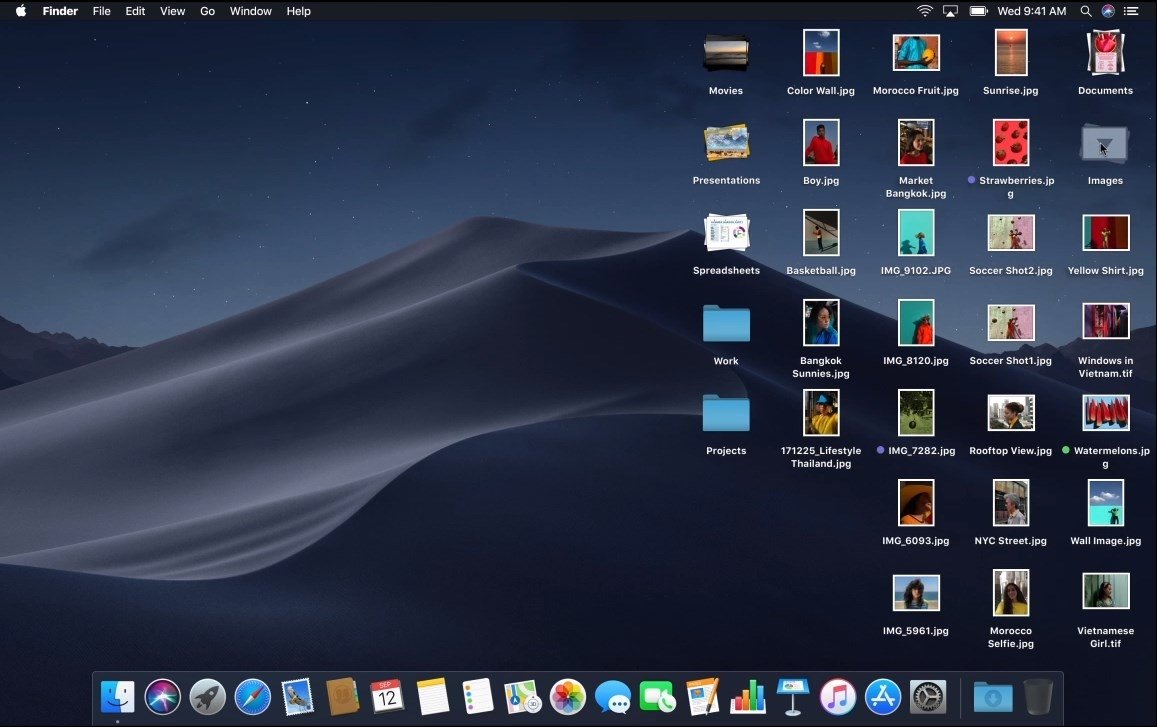The Mac-on-Linux project can run OS X apps, but it requires a PowerPC, not an x86. Virtualizing and emulating are inefficient, especially given the wonderful results the WINE project has had in getting Windows apps to run on Linux. @jcoffland No, the other way around. It's for building OS X applications on Linux. Read the title. 'Cross-Compiling on Linux for Mac OS X 10.3 - 10.5' (emphasis added). Note that this answer is very old by now (almost 7 years old, yikes!) and the later answers below have more up to date information. Sep 12, 2015 I haven't run any Mac program on Linux but there is a project called 'Darling HQ that allows you to run unmodified OS X binaries on Linux. But they also say that it is unlikely that Darling will run your favorite OS X application at this point. Jan 22, 2004 kind of misleading the way u say that linux apps have been ported to mac os x, they havent really, x is a nix so it can use the Xfree interface and run nix programs, panther can actually run x programs in the aqua interface so there is no need to switch over and back between the 2. May 09, 2007 The first step in getting Linux programs running in OS X is to install X11, if it isn’t already. To check if it’s installed, open Finder, select Applicationsand then Utilities. If you don’t see X11(or X11.app depending on your view settings) it’s not installed. Fortunately, I have. Jun 28, 2020 There are plenty of reasons for having Ubuntu run on a Mac, including the ability to broaden your technology chops, learn about a different OS, and run one or more OS-specific apps. You may be a Linux developer and realize that the Mac is the. As long as the developers of the OS X program released their source code and used cross-platform libraries (such as QT, GTK, X11, GNUStep or WxWidgets) you should be able to re-compile an OS X program for linux. OS X and Linux are much more compatible at the API level than the ABI level. GNUStep implements the Cocoa APIs of NeXTStep and OS X.
- Mac Os Like Linux
- Os X Vs Linux
- Run Linux On Mac Os
- Mac Os X Apps On Linux Mac
- Is Mac Os Linux Based
- Mac Os X Apps On Linux Windows 10
The UNIX Porting Guide is a first stop for UNIX developers coming to OS X. This document helps guide developers in bringing applications written for UNIX-based operating systems to OS X. It provides the background needed to understand the operating system. It touches on some of the design decisions, and it provides a listing and discussion of some of the main areas that you should be concerned with in bringing UNIX applications to OS X. It also points out some of the advanced features of OS X not available in traditional UNIX applications that you can add to your ported applications.
This document also provides an entry point for other documentation on various subjects that may be of interest if you are porting an application from a UNIX environment to OS X.
This document is an overview, not a tutorial. In many regards it is a companion to the more extensive Mac Technology Overview, but with a bias toward the UNIX developer.
This document also does not cover porting shell scripts to OS X. For more information about shell scripts and OS X, you should read Shell Scripting Primer.
Bringing UNIX Apps to OS X
The introduction of UNIX-like operating systems such as FreeBSD and Linux for personal computers was a great step in bringing the power and stability of UNIX to the mass market. Generally though, these projects were driven by power users and developers for their own use, without making design decisions that would make UNIX palatable to consumers. OS X, on the other hand, was designed from the beginning with end users in mind.
With this operating system, Apple builds its well-known strengths in simplicity and elegance of design on a UNIX-based foundation. Rather than reinventing what has already been done well, Apple is combining their strengths with the strengths brought about by many years of advancement by the UNIX community.
Mac Os Like Linux
Who Should Read This Document?
Any UNIX developers can benefit from reading this book.
In-house corporate application developers
Commercial UNIX developers
Open source developers
Open source porters
Higher education faculty, staff, and students
Science and research developers
Os X Vs Linux
If you’re a commercial UNIX developer, you are already familiar with other UNIX-based systems and may want to understand the differences between other systems and OS X. You might be interested in porting the GUI from an X11 environment into a native graphics environment using Carbon or Cocoa. You may also have special needs such as direct hardware access, exclusive file access guarantees, and so on.
If you’re a corporate in-house developer (developing applications for internal use), you probably want to port applications with minimal code divergence.
If you’re an open source developer, you might want information about how to incorporate new technologies into your software, and may be interested in GUI porting, depending on your level of interest. Alternately, you might be interested only in quickly porting code to a new platform with minimal changes so that you can easily get your changes back into the official code base. If so, you may be more likely to use compatibility shims than to use new APIs.
No matter what “flavor” of developer you are, this book will provide information that is helpful to you and provide pointers to additional documents that may be of interest.
Important: If you are primarily interested in shell scripts and command-line compatibility, you should read Designing Scripts for Cross-Platform Deployment in Shell Scripting Primer. That document gives a more thorough overview of the shell environment in OS X, including common cross-platform compatibility issues.
Important: This document is not designed for pure Java developers. OS X has a full and robust Java 2 Platform, Standard Edition (J2SE) implementation. If you have a pure Java application already, it should run in OS X.
Organization of This Document
This document is a first stop for UNIX developers coming to OS X. It contains many links to more extensive documentation. Specific details of implementation are covered here only in cases where it is not adequately covered in other places in the documentation set.
To use this document most effectively, first read Overview of OS X to find out the basics about the Mac and to get some of the high-level information you need to begin your port. If you already have an application that builds on other UNIX-based platforms, Compiling Your Code in OS X will help you find out how to compile your code on OS X.
Most of your effort, however, should be spent towards making decisions concerning which, if any, graphical user interface to implement with your application. Choosing a Graphical Environment for Your Application helps you with this.
If you want to refactor your application to take advantage of the rich feature set of OS X, see Additional Features for examples of features available in OS X.
Once you have a complete application, read Distributing Your Application for information on getting your application to OS X users.
See Also
Run Linux On Mac Os
Developer documentation can be found at Apple’s developer website at http://developer.apple.com/. This site contains reference, conceptual, and tutorial material for the many facets of development on OS X. The OS X Developer Tools CD includes a snapshot of the developer documentation, which can be searched for and viewed in Xcode’s doc viewer. The man pages are also included with the OS X Developer Tools.
Apple Developer Connection (ADC) offers a variety of membership levels to help you in your development. These range from free memberships that give you access to developer software, to paid memberships that provide support incidents as well as the possibility of software seeds. More information on memberships is available at http://developer.apple.com.
Once a year in early Summer, Apple hosts the Worldwide Developers Conference (WWDC) in the San Francisco, California Bay area. This is an extremely valuable resource for developers trying to get an overall picture of OS X as well as specific implementation details of individual technologies. Information on WWDC is available on the ADC website.
Apple hosts an extensive array of public mailing lists. These are available for public subscription and searching at http://lists.apple.com. The unix-porting list is highly recommended. The darwin-dev and darwinos-users lists also offer much help but less specific to the task of porting.
In addition to Apple’s own resources, many external resources exist, for example, O’Reilly’s Mac DevCenter, http://www.oreillynet.com/mac/.
Mac Os X Apps On Linux Mac

Is Mac Os Linux Based
Copyright © 2002, 2012 Apple Inc. All Rights Reserved. Terms of Use | Privacy Policy | Updated: 2012-06-11
WineConf Call for Hosts
This is a call for proposals to host the next WineConf sometime this year. Ideally proposals would present;
- Proposed dates
- Proposed city
- Information on potential venues and travel
We'll need to choose a host relatively quickly as it does take time to plan and book the event. I'm hoping we can settle on a host by the end of February but ultimately that decision goes to the Wine Committee. Questions, comments, concerns can be posted on the WineConf mailing list. A draft of a guide to hosting has been started on the wiki [1]. Please take a look to get a sense of what is involved in hosting the conference.
1. https://wiki.winehq.org/Organising_WineConf

News and Updates
July 3, 2020
The Wine development release 5.12 is now available.
What's new in this release:
- NTDLL converted to PE format.
- Support for the WebSocket API.
- Improved RawInput support.
- Vulkan spec update.
- Various bug fixes.
The source is available now.Binary packages are in the process of being built, and will appear soon at their respective download locations.
June 19, 2020
The Wine development release 5.11 is now available.
What's new in this release:

- Wine Mono engine updated to 5.1.0, with WpfGfx library support.
- More work on the separate Unix library for NTDLL.
- Beginnings of a NetIO kernel driver implementation.
- Initial support for the Print Ticket API.
- Removal of the obsolete 32-bit PowerPC architecture.
- Various bug fixes.
The source is available now.Binary packages are in the process of being built, and will appear soon at their respective download locations.
Mac Os X Apps On Linux Windows 10
June 5, 2020
The Wine development release 5.10 is now available.
What's new in this release:
- More progress on the WineD3D Vulkan backend.
- Beginnings of a separate Unix library for NTDLL.
- Better support for anti-cheat kernel drivers.
- More glyph substitutions in DirectWrite.
- Support for DSS private keys.
- ARM64 exception handling fixes.
- Various bug fixes.
The source is available now.Binary packages are in the process of being built, and will appear soon at their respective download locations.